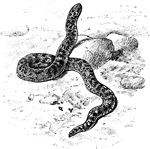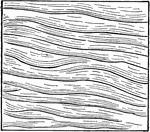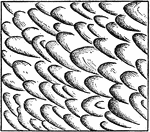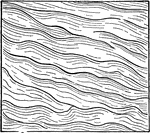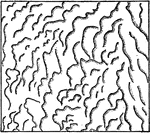
Blowout Grass
Blowout Grass (Redfieldia flexuosa) is a grass found on sand dunes. "a, spikelet; b, flower; c,…
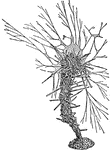
Haliphysena Tumanvitzii
Haliphysena Tumanvitzii; living specimen showing the wineglass-shaped shell built up of sand-grains…

Masked Crab
Corystes cassivelaunus, the masked crab, helmet crab or sand crab, is a burrowing crab of the North…

Annual Honesty
Annual Honesty (Lunaria annua) is a tall (height about 1 m), hairy-stemmed biennial plant found throughout…
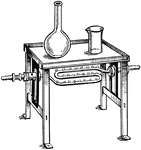
Ruedorf's Sand Bath
"Ruedorf's sand-bath, a simple form of sand-bath in which the temperature can be regulated by raising…
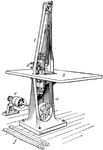
Belt Sander
"Belt-sander. a, standard, supporting machine; b, work-table; c, fabric coated with sand, in the form…
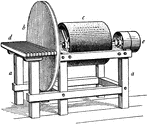
Disk and Drum Sander
"Disk- and Drum-sander. a a, frame of machine; b, vertical disk coated with sand; c, horizontal revolving…
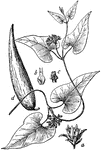
Sand Vine
"Sand-vine (Gonolobus lavis). a, flower; b, crown-lobe tipped by a 2-cleft awn; c, stamen-tube; d, follicle…

Sea Anemone
Edwardsia beautempsi is a species of sea anemone that lives freely in tubes in the sand, unattached.
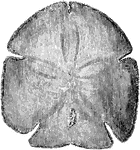
Encope
"Encope emarginata. Encope is a genus of irregular clypeastroid sea-urchins, of the family Mellitidae."…
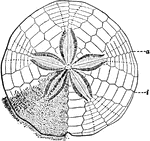
Sand Dollar
The common sand dollar or flat sea urchin. Upper surface with the spines partly removed.
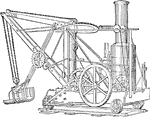
Excavator
"A horse- or steam-power machine for digging, moving, or transporting loose gravel, sand, or soil."…
Limestone Beds
Diagram showing the relationship of the black sapropelitic shales, the oil producers, to the limestone…
Dakota Artesian System
East-west section across South Dakota to show the Dakota artesian system. The Dakota sandstone is composed…
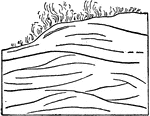
Dune with Eolian Cross-bedding
Cross-section of a dune near Ostend, Belgium showing Eolian cross-bedding.

Dune with Eolian Cross-bedding
Cross-section of a dune near Ostend, Belgium showing Eolian cross-bedding.
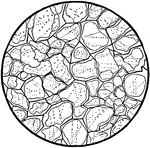
Quartz Sandstone
Thin section of quartz sandstone shown under the microscope. The original rounded quartz grains are…
Eolian Cross-bedding
Cross-bedding of the Eolian type in the Orange sand or La Fayette Formation, Mississippi Central Railroad,…

Eolian Cross-bedding
Eolian type of cross-bedding in ancient limestones, formed of uniform lime-sand grains south of St.…

Eolian Cross-bedding
Eolian type of cross-bedding in ancient limestones, formed of uniform lime-sand grains south of St.…

Delta
Section of a small delta in a lake, showing the fore-sets of pebbles and sand, the bottom-sets of clay,…
Origin of Eskers
Diagrams showing the origins of eskers. A) A tunnel under the ice, nearly filled with sand and gravel…

Ripple Marks
Diagram illustrating the forms of ripple marks and of the reverse impressions of the same.
Progressive Overlap
Section to show normal progressive overlap of the formations and their shoreward change from muds to…
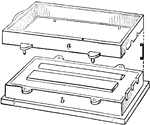
Two-Part Flask
"A shallow frame of wood or iron used in foundries to contain the sand and patterns employed in molding…
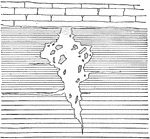
Fissure in Limestone
Diagram of an ancient fissure in fine Upper Silurian limestone, etc., filled with rounded grains of…

Limestone Fragment
Fragment of the wall rock (limestone) included in an ancient sandstone dike; the rock is shattered and…
Pelecypod
Shells of a pelecypod found in the elevated sand beds of northeastern New England, New Brunswick, etc.…
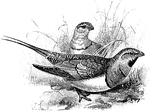
Pin-Tailed Sandgrouse
The Pin-Tailed Sandgrouse (Pterocles alchata) is a bird in the Columbiformes order.

Sand Fiddler Crab
The Sand Fiddler Crab (Uca pugilator) is a small crustacean in the Ocypodidae family of ghost and fiddler…
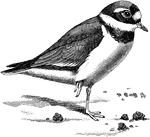
Ringed Plover
"Aegialitis hiaticola, the Ringed Plover, Sand-Lark, or Stone-runner, mistakenly called the "Ring-Dotterel"…

Pallas's Sand Grouse
"Syrrhaptes paradoxus, Sand-Ground, are true desert birds, affording excellent instances of protective…

Moses Slaying the Egyptian
"And he looked this way and that way, and when he saw that there was no man, he slew the Egyptian, and…
Beach Grass
Beach Grass (Calamagrostis arenaria or Ammophila arundinacea), also known as Seasand Reed and Mat Grass,…
Eozoic Strata
In geology and related fields, a stratum (plural: strata) is a layer of rock or soil with internally…

Amoeba
Difflugia one of several genera of amoebozoa that produce shells or tests from granules of sand. These…
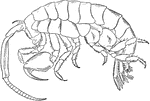
Marine Isopod
The marine isopod or sand flea (Gammarus) is in the sand, under rocks, and in the seaweed. Many are…

Marine Isopod
The marine isopod or sand flea (Caprella) is an omnivorous feeder that eats detritus, one-celled plants,…

Cape Mole Rat
The Cape Mole Rat (Georychus capensis) is a rodent in the Bathyergidae family of blesmols and was also…

Reynard the Fox: Fighting the Wolf
Reynard the Fox and Isegrim the wolf fight each other. Reynard kicks dirt and sand up in Isegrim's eyes.

Coastal Sand Verbena
"Latifolia, perennial: whole plant viscid-pubescent, prostrate: lvs. thick, ovate, orbicular or reniform,…
100 Ton Sand and Gravel Storage and Handling Plant
A diagram of a 100 ton sand and gravel storage and handling plant. "Capacity of bucket elevator is 40…

Quadrant Bin Gates
"Sectional elevation showing M. & G. Quadrant Bin Gates as used for all the bunkers in the Gravel Plant."…
Wedge Point of Pencil
Sharpen the the pencil by removing the wood with a penknife and rubbing the lead on sand paper. The…

Cart use Fender
This cart fender is the part of an automobile that frames the wheel. The primary purpose of the fender…
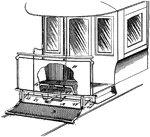
Car Fender
Fender is the US English term for the part of an automobile, motorcycle or other vehicle body that frames…

Track Sanding Apparatus
A motor vehicle wheel track sanding device including a sand storage tank, a hoper mounted over a wheel…

Sand Relief or Terrain Topography Symbol
Conventional sand topography symbol commonly used in map drawing and drafting.
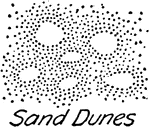
Sand Dunes Relief or Terrain Topography Symbol
A map drawing and drafting topography symbol illustrating sand dune.

Car Fender
Fender is the US English term for the part of an automobile, motorcycle or other vehicle body that frames…
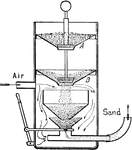
Metal Cleaning using Sand Blast
The air enters the sand blast through the pipe, at the same time, the sand enters the chamber by lifting…

General Purpose Filter
Any substance, as cloth, paper, porous porcelain, or a layer of charcoal or sand, through which liquid…
